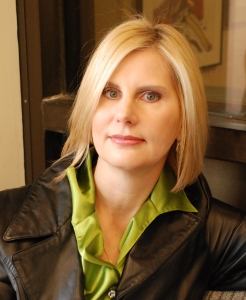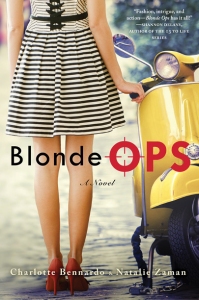 Here is Part 3 of Charlotte Bennardo’s Article on Building a Research database. Click the following links if you missed Part One and/or Part Two.
Here is Part 3 of Charlotte Bennardo’s Article on Building a Research database. Click the following links if you missed Part One and/or Part Two.
Social connections like Twitter, Linked In, and Facebook are also places to find information. You can ask questions like, “Does anyone work with juvenile offenders and can tell me how the system works?” and someone may answer your query. Some, like Linked In, have forums for discussion where people ask and answer questions on a specific topic. These social connections reach across religious, ethnic, cultural, and geographical limits so there are a lot of people you can connect with.
There is practically a museum for everything: Rock and Roll, cars, football, dead bodies (Morgue Museum in NYC), circus oddities, art, history, farming, you name it. The biggest museum in the world is the Smithsonian which compromises twelve museums. It has the Hope Diamond, Lindbergh’s plane, the flag that flew over Fort Sumter and was the inspiration for the Star Spangled Banner, dinosaur bones, inaugural gowns of the First Ladies, etc. And museums will have websites with more information. Don’t overlook traveling exhibits, like the King Tut display that circled around the world. It’s a way to get close to wonders that might have cost a plane ticket.
Some corporations keep records of their history, like Coca-Cola or Boeing. And generally they employ a media relations or PR person who answers questions about the company. If you’re really lucky, they may send you copies of press releases or booklets about the company. They usually have not only the written history, but photos and other artifacts.
Virtual and physical bookstores and sellers can not only tell you when a book will be released, but some allow you to pre-order, and you may even get the book ahead of release. If you buy one book, ask if they can recommend others like it. Via computer, they can tell you about new releases coming up, what’s in stock, or can order copies they don’t have in the store. Plus, Indie bookstores host authors. Maybe one will be near enough for you to talk to them firsthand.
Another primary source is people. Anyone who was directly involved in an event, at a scene, etc. are the bet sources, but not always available. If you can get access to a person who will share what they know, grab it. If you can’t get the actual person, like a prosecutor on a case, try for a secondary source, like the legal secretary who typed up the Death Row appeal. Colleagues, friends, family, group or club members can help shed light on your subject.
Conventions and conferences are a great place to attend workshops, meet experts in the field, talk with people who are well known, and pick up information that the average person won’t be privy to. At the Romantic Times convention, there were workshops in firearms and bomb detection dogs. At the Hackers On Planet Earth convention, famous hackers mingled with the crowds and shared their expertise. There are conventions/conferences for just about every subject so look around.
 Finally, other authors are a great research tool. Read a book about your subject, then check the index for references and the Acknowledgments for a listing of sources the author used. They have opened the door for you on where else to look for information. (Just remember to check that the information is still current and accepted; situations and facts may change over time.)
Finally, other authors are a great research tool. Read a book about your subject, then check the index for references and the Acknowledgments for a listing of sources the author used. They have opened the door for you on where else to look for information. (Just remember to check that the information is still current and accepted; situations and facts may change over time.)
With all the places open to you for gathering information, your novel, even if set in an alternate universe on a distant planet a millennia from now will ring true because you’ve collected the facts. One last caveat; be generous and acknowledge those who helped you either in person or by their own work. Give credit where credit is due. Happy researching!
Here is a little bit about Charlotte:
Until Hollywood calls, Charlotte lives in NJ with her husband, three children, two needy cats and sometimes a deranged squirrel. She is the co-author of Blonde Ops (St. Martin’s/Dunne) and the Sirenz series (Sirenz, Sirenz Back In Fashion, Flux). She’s written for magazines and newspapers. Currently she’s working on solo sci fi, ghost, and time travel novels and loves to hear from fans on Twitter (charbennardo) or through her blog, http://charlotteebennardo.blogspot.com/
Her books:
Beware the Little White Rabbit (anthology- Alice Through the Wormhole, Leap Books)
Blonde OPS (St Martin’s/Dunne)
Publisher’s Weekly calls Blonde OPS “…a light mystery with entertaining dialogue, an energized pace, ever shifting suspects and a glimpse into the benefits and drawbacks of art and fame…”
The SIRENZ Series (Flux)
Sirenz
Sirenz: Back in Fashion
Talk tomorrow,
Kathy
Another great post Charlotte. As a fellow “research addict” I am happy to add so many new references to my arsenal.
LikeLike
By: darlenebeckjacobson on November 24, 2015
at 1:41 pm